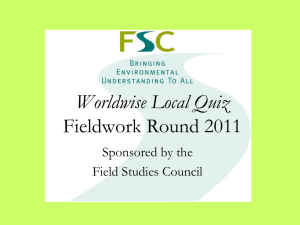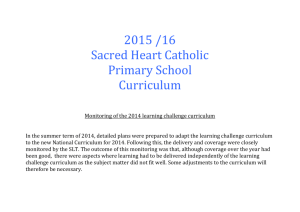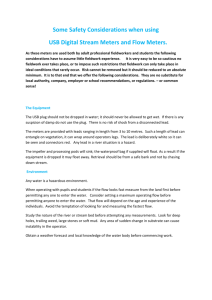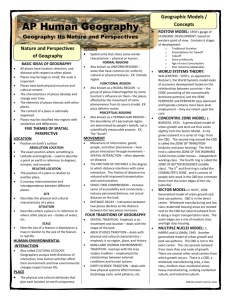Royal Geographical Society with the Institute of British Geographers
advertisement
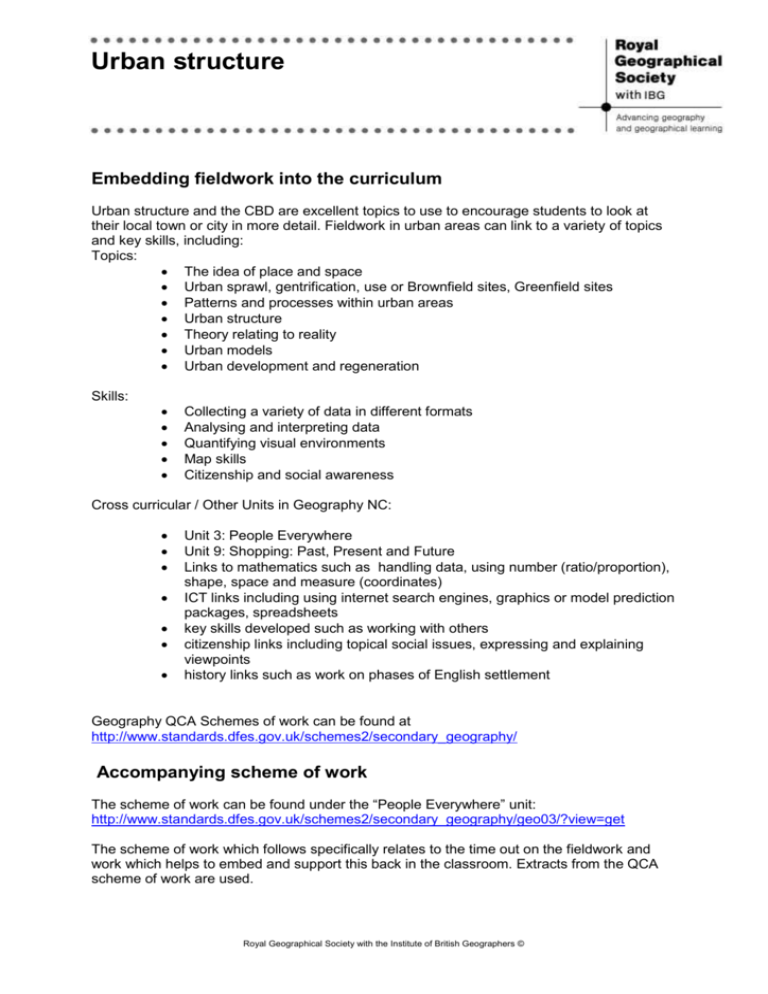
Urban structure Embedding fieldwork into the curriculum Urban structure and the CBD are excellent topics to use to encourage students to look at their local town or city in more detail. Fieldwork in urban areas can link to a variety of topics and key skills, including: Topics: The idea of place and space Urban sprawl, gentrification, use or Brownfield sites, Greenfield sites Patterns and processes within urban areas Urban structure Theory relating to reality Urban models Urban development and regeneration Skills: Collecting a variety of data in different formats Analysing and interpreting data Quantifying visual environments Map skills Citizenship and social awareness Cross curricular / Other Units in Geography NC: Unit 3: People Everywhere Unit 9: Shopping: Past, Present and Future Links to mathematics such as handling data, using number (ratio/proportion), shape, space and measure (coordinates) ICT links including using internet search engines, graphics or model prediction packages, spreadsheets key skills developed such as working with others citizenship links including topical social issues, expressing and explaining viewpoints history links such as work on phases of English settlement Geography QCA Schemes of work can be found at http://www.standards.dfes.gov.uk/schemes2/secondary_geography/ Accompanying scheme of work The scheme of work can be found under the “People Everywhere” unit: http://www.standards.dfes.gov.uk/schemes2/secondary_geography/geo03/?view=get The scheme of work which follows specifically relates to the time out on the fieldwork and work which helps to embed and support this back in the classroom. Extracts from the QCA scheme of work are used. Royal Geographical Society with the Institute of British Geographers © Topic Key Questions How is land used in a town or city? People Everywhere Where are the different land-use zones found and why? How has the pattern developed? How is the pattern changing? How are different groups of people affected? Objectives Activity surrounding fieldwork day to use maps and secondary sources of evidence about patterns and changes in urban land use to collect and analyse different forms of data to construct conclusions to understand in detail characteristics which make up a land use zone (using the exemplar of a CBD) Ask pupils to identify five to 10 different land uses on an aerial photograph of an urban area. Locate these on a 1:50,000 map (OS explorer number 155) and help pupils to draw a generalised plan of the pattern of land use evident, eg CBD, shops/services, open space, factory/work areas. After discussion ask pupils to add explanatory notes to it to suggest reasons for their relative locations. Show pupils a series of aerial photographs/video snippets/personal accounts which show how a settlement (or part of one) has changed over time, eg transformation of the CBD in Bristol. Then ask them to consider the advantages/disadvantages of the changes and how they will have affected different groups of people. Ask them to write about their findings/imagined responses in two paragraphs (one in favour and another against the changes). Activity within fieldwork day Possible Outcomes Resources Pupils carry out surveys along a transect which measure factors such as building height and use, environmental quality, pedestrian surveys, scoring locations and cost of car parking. They collect data in groups to analyse back in the classroom. To produce a layered map (one base map with layers of tracing paper) which map out their results. OS map (explorer 155) Royal Geographical Society with the Institute of British Geographers © To produce a group report which shows, using mapped out evidence and secondary data, where the edge of the CBD is. The title could be “An investigation into where “Broadmead*” should end.” *Broadmead is the name for the centre of Bristol. GOAD map of Bristol – broadmead (Available through Experian) or other superplan map of Bristol.


